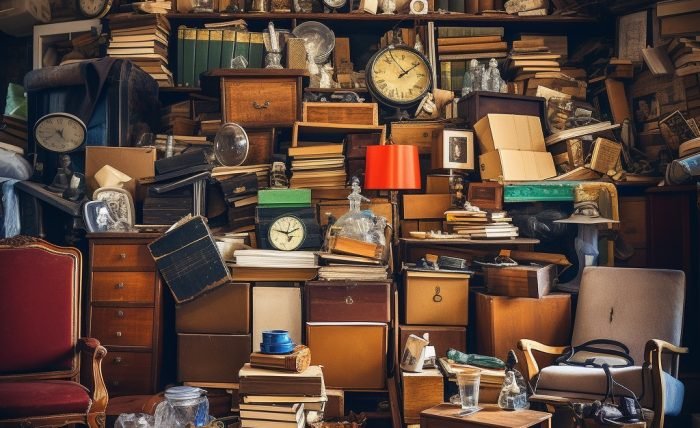Hoarder tips is a complex issue that affects many people, leading to cluttered living spaces and, often, significant distress. If you’re struggling with hoarding tendencies or know someone who is, this guide provides practical tips and strategies to help declutter and organize your home. By taking small, manageable steps, you can transform your living environment and improve your overall well-being.
Understanding Hoarder tips
Before diving into specific tips, it’s essential to understand what hoarding is and why it happens. Hoarding involves the persistent difficulty in discarding or parting with possessions, regardless of their actual value. This behavior can lead to cluttered living spaces that interfere with daily activities and pose health and safety risks.
Causes of Hoarding
Hoarding can be caused by various factors, including:
- Emotional Attachments: Strong sentimental value attached to items.
- Fear of Loss: Anxiety about needing the items in the future.
- Indecisiveness: Difficulty making decisions about what to keep or discard.
- Perfectionism: Fear of making mistakes in discarding items.
Recognizing the Signs
Common signs of hoarding include:
- Accumulating large quantities of items with little or no use.
- Difficulty moving through living spaces due to clutter.
- Emotional distress or anxiety at the thought of discarding items.
- Keeping items that others consider trash or unnecessary.
Getting Started with Decluttering
Starting the decluttering process can be overwhelming, but breaking it down into smaller steps can make it more manageable.
Set Realistic Goals
Begin by setting realistic and achievable goals. Instead of aiming to declutter your entire home at once, focus on one room or even one area of a room at a time. Celebrate small victories to stay motivated.
Create a Plan
Develop a decluttering plan that outlines specific tasks and a timeline. This plan should include sorting items into categories, such as keep, donate, sell, and discard. Stick to the plan to maintain momentum.
Assemble Necessary Supplies
Gather essential supplies, including garbage bags, storage bins, cleaning supplies, and labels. Having these items on hand will make the decluttering process more efficient.
Effective Decluttering Strategies
With your goals set and supplies ready, it’s time to dive into specific strategies for effective decluttering.
The Four-Box Method
The Four-Box Method is a practical approach to decluttering. Label four boxes as follows:
- Keep: Items you use regularly and have a place for.
- Donate: Items in good condition that you no longer need but can help others.
- Sell: Valuable items you no longer need that can be sold.
- Discard: Items that are broken, damaged, or no longer usable.
As you go through each item, place it in the appropriate box. This method helps you make decisions systematically.
The One-Year Rule
If you’re unsure about keeping an item, apply the One-Year Rule: If you haven’t used it in the past year, it’s likely safe to let it go. Exceptions can be made for seasonal items or things with significant sentimental value.
The KonMari Method
Marie Kondo’s KonMari Method focuses on keeping items that “spark joy.” Hold each item and ask yourself if it brings you happiness. If it doesn’t, thank it for its service and let it go. This method encourages mindfulness and intentionality in keeping possessions.
Organizing Your Space
Once you’ve decluttered, the next step is organizing your space to maintain a clutter-free environment.
Assign a Place for Everything
Ensure that every item has a designated place. Use storage solutions like shelves, bins, and containers to keep items organized. Labeling containers can help you quickly identify where things belong.
Create Zones
Organize your space into functional zones based on activities. For example, create a reading nook, a workspace, or a crafting area. This helps maintain order and makes it easier to find and store items.
Implement a Maintenance Routine
Regularly set aside time to tidy up and maintain the organization. A daily or weekly routine can prevent clutter from accumulating again. Develop habits like putting things back where they belong immediately after use.
Seeking Professional Help
For many hoarders, seeking professional help is a crucial step toward recovery and maintaining a clutter-free life.
Professional Organizers
Professional organizers are trained to help individuals declutter and organize their spaces. They provide personalized strategies and support to make the process less overwhelming.
Therapy and Counseling
Hoarding often has underlying psychological components. Therapy or counseling can address these issues and provide coping mechanisms to manage hoarding tendencies. Cognitive-behavioral therapy (CBT) is particularly effective in treating hoarding disorder.
Support Groups
Joining a support group can offer encouragement and understanding from others facing similar challenges. Sharing experiences and strategies can be incredibly motivating and reassuring.
Hoarder tips is a challenging issue, but with the right strategies and support, it is possible to declutter and organize your space. By understanding the causes of hoarding, setting realistic goals, and employing effective decluttering methods, you can create a healthier and more enjoyable living environment. Remember, small steps lead to significant changes, and seeking professional help can provide the additional support needed for lasting success.

